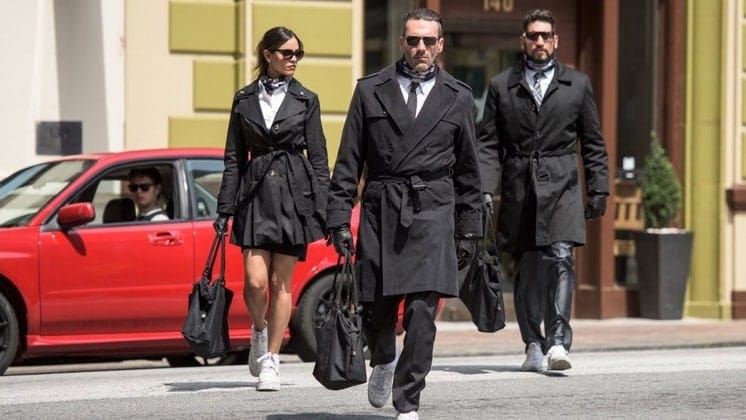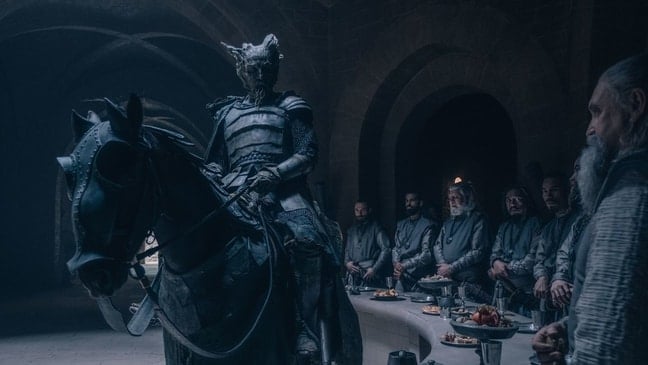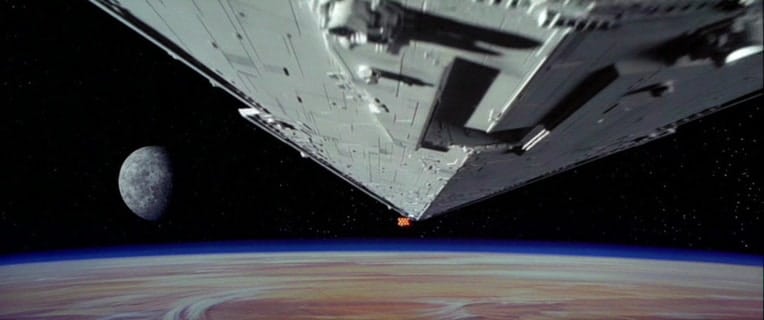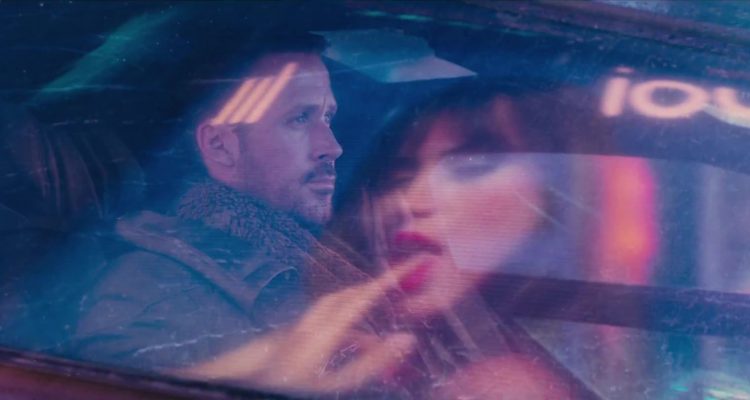Table of Contents
Writing Act One
Writing your first act or rather, the period of time before your story really kicks off with the truly dramatic event (the inciting incident), is essential to several elements of your screenplay. Character, theme, tone and your story world are all introduced here. While act one doesn’t give us the overarching conflict just yet it helps to set up and foreshadow that which is to come.
Act one is your status quo. It is how you show the audience what your world and characters were like before the conflict came along and turned it all upside down. Be it a city right before the outbreak of a zombie plague, a happy couple before the scandal that ruins their relationship, a miserable protagonist or the group of cheerful teens before the killer arrives.
When structuring your first act it should be building up to that dramatic moment where the central conflict comes into play. Whatever structure you choose for your script having that build-up is essential. If we began in the middle of the conflict without prior build-up, it would likely be jarring for the audience.
1. Introducing Your Characters
Act one is the place, crucially, for character introductions, specifically those at the core of your story. Your protagonist, antagonist and major supporting characters should all have made at least some appearance or mention in your first act. And even if the antagonist, for instance, hasn’t made an appearance, they must have some kind of presence.
This means, overall, that you don’t have to introduce essential characters during a pivotal gunfight or thrilling chase. Instead, you’ve laid the groundwork of character for the audience to enjoy the ride without having to catch up with essential information.
Baby Driver Example
So how do you introduce your characters when writing act one? Well for a good example let’s look at the opening scene of Baby Driver.
This first scene is not only technically impressive but it also gives us key insight into our protagonist without him even really saying a word himself.
We can tell from this scene alone who he is as a person.
- Baby is a getaway driver but he obviously doesn’t like to see people hurt or scared.
- He’s a demon behind the wheel and evades the police effortlessly.
- He’s generally fun and light-hearted but above all else, he has an insatiable taste in music. Music, in turn, is essential to his skills as a getaway driver.
It’s important that your character introduction gives us a sense of who this person is. It’s vital that by the end of that first scene with said character your audience at least somewhat understands who they are and remembers them.
- What is your character wearing?
- What are they doing?
- And how are they acting? How do they carry themselves?
- How do they relate to the characters and the world around them?
These are all useful and important questions to ask yourself when introducing a character. And the answers can manifest in the subtlest of actions, clothes, mannerisms and/or lines of dialogue.
Baby Driver‘s opening also gives us a glimpse at the film’s twist antagonist: Buddy (played by Jon Hamm). While he initially appears as an ally and is the more friendly face out of the crew for most of the film, this scene demonstrates his violent tendencies and separateness from the group before we’ve even really met him, giving us as the audience a great dose of foreshadowing.

Active, Multi-Dimensional Characters
When writing act one of your screenplay be sure to add in some key character-driven moments. This is important to get across who your characters are early on. These moments not only give your audience a closer look at the character in question but also set up character development in later acts.
This will be a scene or set-piece where we learn something about the character functioning in their world. It may be how they handle a particular situation or something about what they typically do in their day to day life.
Furthermore, something to avoid with your key characters, specifically your protagonists and antagonists is to make sure none of them are flat and/or passive.
- So have them doing things constantly, even if these are only small actions.
- If your hero just sits around waiting for the villain to do something it will be boring for the audience.
- Similarly, if the antagonist is just in the background waiting for the protagonist, then tension is lost.
- The characters must be active and not passive in this first act. The inciting indent will drive them into action and into act two. But they must still be actively participating in the world around them, affecting it with their actions.
Moreover, remember to establish your characters’ flaws. Establishing these early on gives your characters more time to work on these flaws. This, in turn, means more time for character development and more in-depth arcs for those characters. A character flaw set up early on means the potential for this character flaw to be solved by the script’s subsequent acts. You’re laying the ground for potential sub-plots, moments of drama, development and ultimately change.
2. Creating a Consistent Tone

Another important element to consider when writing act one is tone. What are you trying to write? Is it a dark, moody neo-noir? A fun light-hearted comedy? Introducing a tone early on and keeping that tone for the remainder of your script is crucial to creating an even and consistent story.
An inconsistent tone can result in a disjointed mess.
- If someone picks up your script and finds the first few minutes to be a hilarious slapstick joyride about some soldiers at base camp but soon it becomes a story about the horrors of war, you risk losing them.
- Tone can, of course, be subverted. But the groundwork for this must still be laid. A very sudden shift in tone is difficult to pull off without the requisite build-up.
So how do you write tone into your first act? Scene descriptions can be a vital tool in this regard. Detailed world-building helps you set up the color of the characters’ environment and the elements that will bear down on them throughout the story.
Environmental descriptions, for example, are useful for introducing tone when writing your first act. Tell the reader how the moss creeps up the walls of your haunted house or how messy the room of your teenage protagonist is. You want those first images to tell your viewer what kind of film they’re in for via the detail of your writing.
Also, consider the action you write in that first scene. What happens during those first few moments of your film? And how does this set the tone for the rest of the story?
Atomic Blonde Example
The cold open from Atomic Blonde serves up a great example of how to set up tone.
- Agent Gascoigne is chased through a dingy East Berlin alleyway in his bathrobe before being viciously and unceremoniously executed, then dumped into a river.
- This sets up the film’s brutally violent and treacherous story of espionage and deceit. Whilst it also piques the interest of the audience with an instant flash of the kind of action they can expect throughout the film.
- Even Gascoigne’s bathrobe tells us that you can always be caught off guard. This is the world of the story; one where every character has to be on their toes.
The film starts with a bang and throws us into a fast-paced world of espionage. Not only do we get key information about the context, but we know exactly what kind of exploration of the context this will be. This is no historical drama, it’s an action-thriller. A more studied and slower introduction might make the audience think they are watching a drama, particularly given the context. But the action and style of that action lay out the genre and tone in no uncertain terms.
3. Introducing Your World

World building is something that can be useful to split into two parts; exposition and backstory. These two things may sound the same, but they are very different.
- Exposition is what you’ve written into your script.
- Backstory is your overall world, such as fictional historical events or a character’s life story.
When writing act one it can be tempting to have a great big exposition dump. If you’ve written a vibrant fantasy world to accompany the hero’s quest, for example, you might want to write your first act to be full of all the magic systems and long, detailed history you’ve conjured up. Avoid this at all costs!
Remember your first act needs to sell the script to your audience.
- If it is good for your tone or character introductions to have a scene with part of your protagonist’s backstory then do it.
- But don’t include it if you can’t think of a dramatic, imaginative way to express it.
- Don’t feel the pressure to convey everything all at once. Trust in other elements of your world and characterisation to pull the audience in.
Don’t slow down the narrative progression by including a moment where the action stops and the script essentially talks to the audience. Instead, the exposition has to be woven into the action itself. How can you illustrate the world at hand alongside introducing the character and their actions?
Green Knight Example
Take The Green Knight for example.
- The titular Green Knight’s introduction isn’t given any fanfare.
- He appears at King Arthur’s celebrations after being summoned through a magical ritual. He isn’t explained or even given much dialogue.
- This scene doesn’t tell us who the Green Knight is or where he comes from but it does tell us a lot about the world.
- Firstly there is magic in this world. We don’t know how it works or where it comes from but we don’t need to. We just need it to be established early in the story. Secondly, there are magical creatures in this world.
This means that later in the film we don’t bat an eye at the ghosts, witchcraft and giants that Gawain encounters because we understand that this world has magic and magical creatures from the world the first act establishes. It sets the stakes in this regard, allowing us to understand the reality of the world so that we can become fully enveloped in the story as a whole.
You want to pull your audience in. They don’t have to understand everything at this point, it’s more important they understand the essential rules of this world and feel invested in the protagonist navigating it. An effective character introduction, enticing tone and a rich world will significantly help achieve this.
But What If You’re Not Writing Fantasy or Sci Fi?
This goes for any genre, not just fantasy. Even modern-day dramas need to have some kind of world established. Is this a world where an ex-cop can take on a gang of gun-toting criminals? Where one woman can investigate a corrupt legal system? Establishing these things are possible even in a small way makes the rest of your story believable.
Something that is important to consider in your world-building is the stakes.
- If you’re writing a story where your antagonist could destroy the world, for example, you need to establish its plausibility within your script’s world.
- For instance, if you were to write a gritty crime drama and suddenly the villain’s goal is world domination it might result in the breaking of the audience’s suspension of disbelief. But in a world of superheroes and operatic plot movements, this kind of development will likely feel more at home.
In addition, keep in mind that bigger isn’t always better. Even if your antagonist‘s end goal is world domination, make the stakes personal to the protagonist. If you establish what is precious to your protagonist in the first act you make the audience care about the goal they’re striving towards.
This is why often even in grand stories about saving the world, the protagonist will have a love interest to save alongside the wider world. It helps makes the stakes personal and intimate, relatable and grounded.
Ultimately, the world around the protagonist is crucial in making the stakes believable. Your act one must set the rules of this world, whatever the genre. The audience will consequently be comfortable in whatever direction you take them in, implicitly understanding the parameters and stakes of the story world.
4. Introducing Your Themes

What is your story about? Friendship? Corruption? Money? Establishing this in act one is extremely important. Something can’t really be an undercurrent of the story if it shows up halfway through.
Take the beginning sequence of Star Wars.
- We immediately see the overarching theme of hope.
- The sequence aboard the Tantive IV at the start of the film sets up how outmatched the crew are with that initial shot. However, they are still able to get the plans away from Vader and the empire.
- This then unfolds throughout the film. From the daring rescue attempt on the Death Star to the climactic trench run. It all relies on a few good people versus an overwhelming tide of evil.
There will most likely be several themes running throughout your script. It’s good to think about and apply those themes that you intend for your story when writing act one.
But how does that theme manifest? Well, the theme should be visible in the characters’ actions, the tone of the world and action and the structure of how each scene pieces together.
There are many different ways to represent a theme in your act one.
- You may start with a cold open, for example.
- Or you may have the protagonist engage in a conversation with another character.
- A scene or set-piece full of action may establish the theme.
- Or imagery might highlight your theme, even if it’s subtextual.
Overall, what your story is essentially about needs to be present in act one, ideally in as much of a cinematic manner as possible, woven into the very fabric of the unfolding narrative. Your method may be subtle and almost imperceptible or clear and distinct. But either way, the audience needs to understand, implicitly or explicitly, what your story is about.
5. Setting Your Story in Motion
So you’ve got your characters, themes, tone and world set up, but how do you bring it all together? For an example of all of these elements in action let’s look at Bladerunner 2049.
Blade Runner 2049 Example

- In act one we see K introduced as a merciless hunter of his fellow replicants.
- However, we also see how lonely he is and how he himself suffers his co-workers’ prejudice.
- His only companion is his store-bought holographic girlfriend, Joi.
- At the end of the first act, he is given a ray of hope and sent after a mysterious replicant child, someone that shouldn’t exist.
This series of events in the first act introduces every element we’ve discussed.
- The opening fight with Sapper sets up K’s world for us as an audience. We know that replicants who go rogue are hunted. We also know that K too is a replicant sent to execute or recapture those that escape.
- The grimy homestead, the fields of solar panels, the maggot farm and the flying car in this scene let us know that this is a dystopian future before we even see a neon-lit skyscraper or the wall holding the sea back from Los Angeles. Simply through scene descriptions in those opening moments, we garner both tone and setting.
- The initial confrontation with Sapper and the introduction of Joi demonstrate the theme of what it means to be human; Sapper questioning K’s robotic focus. Furthermore, does Joi actually care for K or is she just programmed to? The entire central theme of the film is set up over the course of those first minutes; what does it mean to be human?
Combining all of these elements and trying to keep away from pitfalls such as exposition dumps will keep your audience both engaged and make the rest of your story much easier to write by getting the set-up out of the way. This lays the ground for your story to start moving forward, heading into act two.
In Conclusion: Structuring Act One
Act one is the set-up of your entire script. It’s the part of the story which allows you to prepare and combine each element of your story into an overarching narrative. These combined aspects allow you to create a solid foundation for your entire story. With a successful and balanced act one, you have a licence to take the audience on any journey you wish.
The first act is essentially a combination of all the different elements we’ve outlined above. Laying out these elements separately and then combining them all together is a great way to start when writing act one.
- Introduce your characters.
- Set up and color the story world.
- Set up your theme(s).
- Establish the tone.
- Then bring all these elements together.
This is the essential structure of a successful act one. It doesn’t necessarily matter what order these elements come in. Ultimately, they’re all working to support each other. But miss one and your first act won’t be robust in supporting the rest of the story.
These missing elements will always rear their head later on in the script. This might be, for example, via a jarring shift in tone, a character action that doesn’t feel justified, or a theme that seems tacked on. Act one is where you lay the foundations for the rest of your story to make sense. If you miss this opportunity, your script won’t forget.
– What did you think of this article? Share It, Like It, give it a rating, and let us know your thoughts in the comments box further down…
– Struggling with a script or book? Story analysis is what we do, all day, every day… check out our range of script coverage services for writers & filmmakers.
This article was written by Callum Scambler and edited by IS Staff.
Get *ALL* our FREE Resources
Tackle the trickiest areas of screenwriting with our exclusive eBooks. Get all our FREE resources when you join 60,000 filmmakers on our mailing list!


Amazingly in-depth and easy to absorb!
Glad we could help!